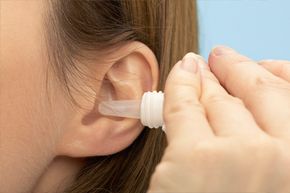At my first child's first well-child checkup, her pediatrician offered advice that I've returned to again and again: "Never stick anything smaller than an elbow in her ear."
Turns out, that's easier said than done. The temptation to mine one's ear canal to remove errant wax may be a mysterious facet of the human condition. In 2011, North Americans spent $63 million on ear-cleaning products designed for home use [source: Beck]. From cotton swabs to specially made mini-vacuums, humans seem to love cleaning out their ears. There's just one problem: Ears aren't designed to work that way.
Advertisement
Ears are self-cleaning. The cul-de-sac-shaped ear canal has cells that move wax and debris toward the outer ear, where it dries, flakes and falls away from the body. The normal movements of the jaw — talking, eating and yawning — all aid in this process. Inserting anything into the ear can cause problems, such as ringing or hearing loss (which might be why you're trying to remove the wax in the first place). Even water irrigation of the ear canal can cause an eardrum perforation or infection. And, if the earwax is pushed back down the canal as an unintended consequence of cleaning, it can harden and cause pain, itching and other problems [source: McGrath].
If the ear canal does need to be cleaned, it's best to see a medical professional. Often, he or she will use drops or irrigation to flush the ear canal. In some cases, a suction device or a small instrument with a wire loop at one end may be used to remove wax. Procedures like these can range from $60 to $180 or more.
There are minimally invasive ways to clean your ears at home. First, insert a few over-the-counter ear-cleaning drops into the ear. Or use a few drops of mineral oil, glycerin or hydrogen peroxide. These help soften the earwax. The more liquefied the wax is, the faster it will vacate the ear through normal processes, ending up in the outer ear. Then, use a warm, wet washcloth to clean the earwax from the external part of the ear [source: McCoy].
If it still feels like there is earwax in your ear, try letting warm water run into your ear. The best way to do this is to tilt your head while in the shower, allow the ear to fill with water and then straighten your head so that the water can drain. A more extreme measure would be to use a bulb syringe filled with warm water to gently irrigate the ear canal [source: Beck].
Whatever method you undertake, keep in mind that a delicate instrument sits at the back of the ear canal: the eardrum. Damaging this instrument can cause infections or hearing loss, so proceed with caution.
Advertisement
